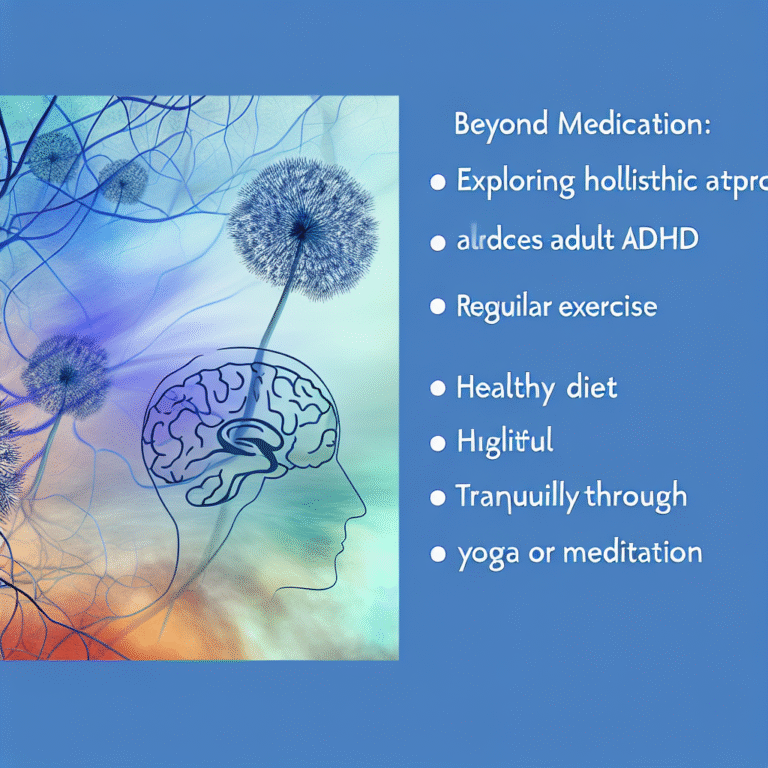
Navigating the Minefield: Strategies for Managing PTSD Triggers – The Ultimate Guide
Introduction
In a landscape where mental health issues are finally receiving the attention they deserve, Post-Traumatic Stress Disorder (PTSD) remains one of the most complex challenges faced by individuals across the globe. The journey of healing is often hindered by PTSD triggers—sensory stimuli or reminders of traumatic events that provoke intense emotional responses. This article aims to provide insightful and practical strategies for navigating the minefield of PTSD triggers. By understanding and incorporating these strategies in daily life, individuals affected by PTSD can take meaningful steps toward emotional regulation, resilience, and ultimately, healing.
Understanding PTSD and Its Triggers
What is PTSD?
Post-Traumatic Stress Disorder (PTSD) is a mental health condition that can develop after experiencing or witnessing a traumatic event. Symptoms often include flashbacks, nightmares, severe anxiety, and uncontrollable thoughts about the event.
What are Triggers?
PTSD triggers can be anything from sounds, smells, or sights to entire environments that remind an individual of their trauma. For instance, a combat veteran may feel triggered by fireworks, while a survivor of a car accident may react strongly to the sound of screeching tires.
Understanding what triggers exist is crucial for those involved in navigating the minefield: strategies for managing PTSD triggers. Identifying these triggers can empower individuals to better prepare and respond to them.
The Importance of Developing a Trigger Management Plan
A well-structured plan for managing PTSD triggers is essential. Such a plan can help individuals regain a sense of control, reduce anxiety, and promote healing. It often involves:
- Identifying triggers
- Developing coping strategies
- Creating a support network
- Practicing self-care techniques
- Seeking professional help if needed
Effective Strategies for Managing PTSD Triggers
1. Identify Your Triggers
Knowledge is power when navigating the minefield: strategies for managing PTSD triggers. Keeping a journal can help in recognizing patterns. Write down situations where feelings of anxiety or distress arise.
Case Study: Emily’s Journal
Emily, a survivor of domestic abuse, found that specific phrases or tones of voice triggered her anxiety. By maintaining a journal, she identified these phrases quickly and began to work on ways to cope with their effects.
2. Grounding Techniques
Grounding techniques help detach from overwhelming emotions. Techniques can include deep breathing, visualization, or engaging in physical activities.
Table: Common Grounding Techniques
| Technique | Description |
|---|---|
| Deep Breathing | Inhale for four counts, hold for four, exhale for four. |
| 5-4-3-2-1 Technique | Name five things you can see, four you can touch, three you can hear, two you can smell, one you can taste. |
| Visualization | Picture a peaceful scene or memory. |
3. Create a Safe Space
Establishing a physical space that feels secure can be beneficial. This area should be comforting and stocked with items that promote relaxation, like soft lighting and calming scents.
4. Seek Support
Engaging with support groups or therapy can create a safe space for sharing experiences. This communal support is invaluable when navigating the minefield: strategies for managing PTSD triggers.
Case Study: James’ Support Group
After losing a friend in combat, James felt isolated and detached. He joined a veterans’ support group where members shared their stories and coping methods. This connection significantly reduced feelings of loneliness and anxiety.
5. Practice Mindfulness Meditation
Mindfulness encourages a focus on the present and can significantly reduce anxiety levels. This is particularly useful for those dealing with PTSD triggers.
Quick Tip: Start Small
Begin with just five minutes of meditation each day. Gradually increase the duration as you become comfortable.
6. Engage in Self-Care
Physical health greatly influences mental health. Ensure you’re getting enough sleep, eating nourishing foods, and engaging in regular physical activity.
7. Professional Help
Therapy or counseling with a qualified mental health professional can provide tailored strategies for managing PTSD triggers. Cognitive Behavioral Therapy (CBT) and Eye Movement Desensitization and Reprocessing (EMDR) are commonly used approaches.
Case Study: Anna’s Therapy Journey
Anna sought help after repeatedly experiencing panic attacks due to triggers related to her experience with assault. Through CBT, she learned to reshape her thoughts about these triggers, decreasing their power over her.
8. Set Realistic Goals
Setting manageable goals for coping can help to create a sense of achievement and progress. Break down larger aims into smaller, actionable tasks.
Table: Sample Goal Setting Framework
| Goal | Action Steps | Time Frame |
|---|---|---|
| Reduce anxiety | Practice mindfulness for 5 minutes a day | 1 week |
| Identify triggers | Journal three triggers per day | Daily for 2 weeks |
| Join support group | Research local groups and attend at least one meeting | 1 month |
The Role of Self-Compassion and Acceptance
When navigating the minefield: strategies for managing PTSD triggers, it is crucial to cultivate self-compassion. Understand that healing takes time, and it’s normal to have setbacks. Treat yourself with kindness, just as you would for a friend facing similar struggles.
Conclusion
Managing PTSD triggers is an ongoing journey rather than a destination. By utilizing these strategies—identifying triggers, employing grounding techniques, building a support network, and practicing self-care—individuals can empower themselves in their healing journey. It’s essential to embrace the process, acknowledging that every small step counts.
Motivational Takeaway
Take heart: the minefield of PTSD triggers can be navigated with intention and support. You possess the power to regain control over your life, and each strategy you implement is a step towards resilience and recovery.
FAQs
1. What are common PTSD triggers?
PTSD triggers can be varied and include loud noises, specific smells, certain people, or reminders of the traumatic event. Identifying these triggers is essential for managing your response to them.
2. Can grounding techniques be practiced anywhere?
Yes, grounding techniques can be practiced anywhere and are particularly useful in high-stress situations. They help anchor you to the present moment.
3. Is it possible to fully recover from PTSD?
While some individuals achieve full recovery, many find that they learn to manage their symptoms effectively. Recovery is personal and can vary from person to person.
4. How long does PTSD last?
The duration of PTSD varies. Some individuals experience symptoms for months or years, while others may find relief sooner through effective coping strategies and therapy.
5. Should I seek professional help right away?
If you find that your triggers are overwhelming or significantly affecting your day-to-day life, seeking professional help is advisable. They can provide tailored support specific to your needs.
In navigating the minefield: strategies for managing PTSD triggers, remember that support is key, and every step you take is valid. A journey of healing is not linear, but with the right tools, you can move toward a brighter future.















